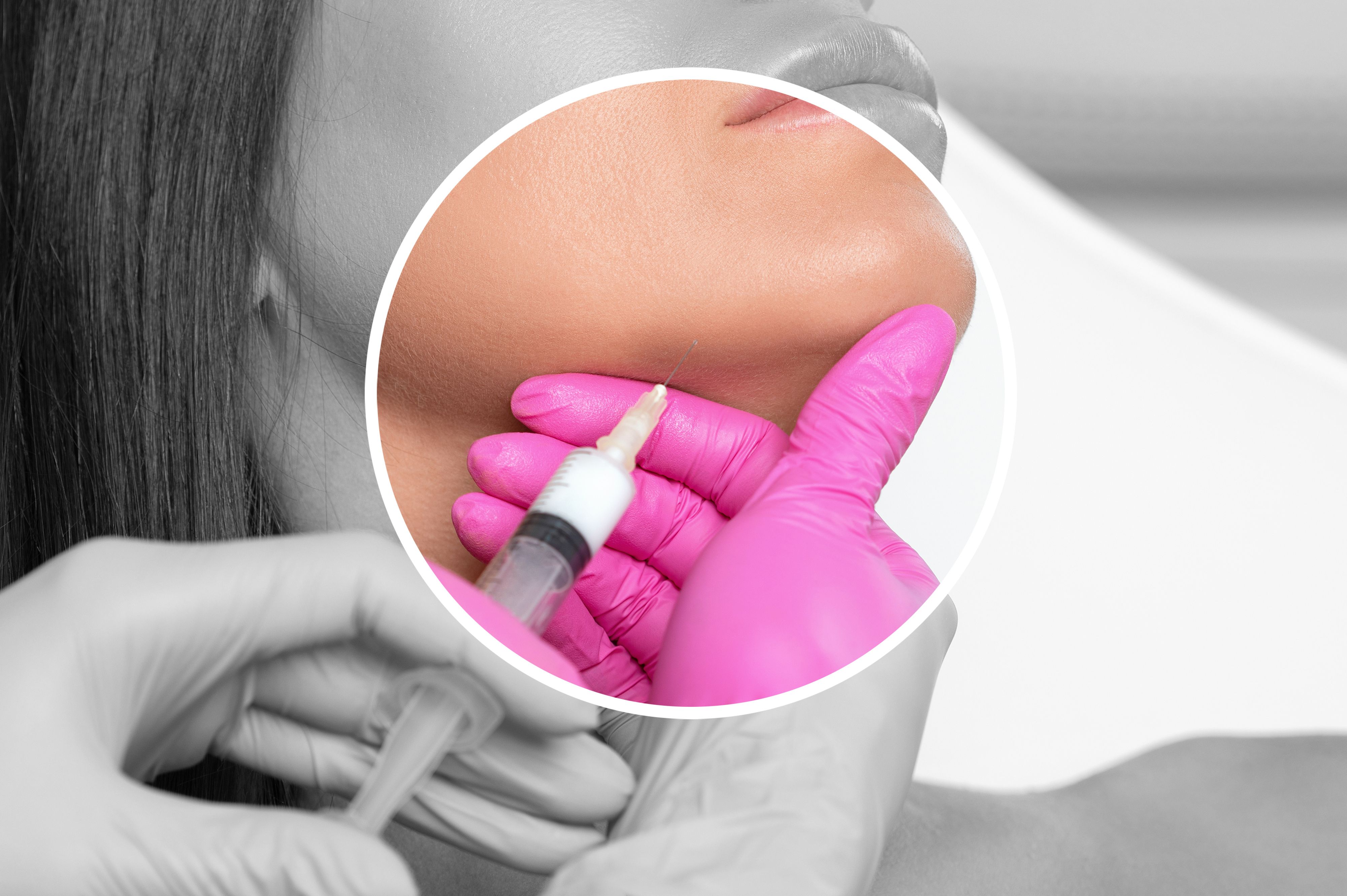- Case-Based Roundtable
- General Dermatology
- Eczema
- Chronic Hand Eczema
- Alopecia
- Aesthetics
- Vitiligo
- COVID-19
- Actinic Keratosis
- Precision Medicine and Biologics
- Rare Disease
- Wound Care
- Rosacea
- Psoriasis
- Psoriatic Arthritis
- Atopic Dermatitis
- Melasma
- NP and PA
- Skin Cancer
- Hidradenitis Suppurativa
- Drug Watch
- Pigmentary Disorders
- Acne
- Pediatric Dermatology
- Practice Management
- Prurigo Nodularis
- Buy-and-Bill
News
Article
Late-Breaking Phase 2b Data Showed Efficacy of Injectable Polidocanol for Submental Fat Reduction
Author(s):
The injectable polidocanol exhibited high efficacy, quicker onset of benefit, reduced downtime, and fewer side effects lasting longer than 30 days.
Kavita Darji, MD, FAAD,board-certified dermatologist and laser and cosmetic dermatologic surgery fellow at Cosmetic Laser Dermatology in San Diego, California, presented late-breaking data from a phase 2b clinical trial, shedding light on the safety and efficacy of injectable polidocanol for reducing excess submental fat during the 2024 American Academy of Dermatology Meeting. Darji introduced the study product, a synthetic non-ionic detergent FDA-approved for sclerotherapy, demonstrating adipolytic properties and a favorable profile compared to deoxycholate.1 Polidocanol is currently being developed under 505(b)2 pathway showing less inflammation and release of cytokines TNFα and MCP-1 by macrophanges than deoxycholate.2
The trial enrolled 51 subjects across 4 research sites, distributing them into 4 dose cohorts (2%, 3%, 4.5%, and a vehicle control) in a 1:1:1:1 ratio. Each subject received up to 6 treatments, administered four weeks apart, involving up to 50 injections of 0.2 ml each. Study endpoints included Clinician Submental Fat Score (CSFS) and Patient Submental Fat Score (PSFS) on a 0-4 point scale, alongside local skin reactions and safety assessments.
Darji highlighted 2 key analysis populations: Intent-to-Treat (ITT) and Completer Population (CP). The CP consisted of 40 subjects who had at least 4 treatments, completed treatments per protocol, and showed no significant protocol deviations.
The data unveiled positive results including:
- The ITT analysis of the 3% and 4.5% dose groups demonstrated a ~4-fold increase in ≥ 2-grade improvement in the composite FDA endpoint relative to Kybella (62% vs. 16%).
- In the Completer Population, 80% achieved a 2-grade improvement in the composite endpoint, showcasing the success from both clinician and patient perspectives.
- Patients using 10XB-101 experienced a more rapid onset of efficacy than Kybella, with an average 1-grade improvement after 2 treatments and a 50% achievement of 2-grade improvement by four treatments.
- Tolerability side effects showed a >50% reduction, influencing product adoption positively.
Darji provided a visual representation of the data with before-and-after photos of subjects, illustrating the a notable reduction in submental fat and potential skin tightening effects.
Adverse event analysis revealed a favorable safety profile, with 98% of local skin reactions rated as 0 or 1. One serious adverse event, myocardial infarction, was resolved, and no safety signals were noted in labs or EKG assessments.
Darji highlighted the significant decrease in bruising, pain, burning, and stinging, with 10XB-101 exhibiting lower percentages compared to Kybella. Moreover, the trial demonstrated a decrease in edema, particularly severe cases, compared to previous Kybella trials.3
"With these results, there is a potential opportunity to maybe expand the treatment to other anatomic areas,” Darji concluded. She emphasized that the data supports superior efficacy and tolerability compared to current products. The injectable polidocanol exhibited high efficacy, quicker onset of benefit, reduced downtime, and fewer side effects lasting longer than 30 days.
References
- Darji K. A Phase 2B Clinical Trial. Assessing the Safety and Efficacy of Injectable Polidocanol for Excess Submental Fat Reduction, late-breaking session 1. Presented at: 2024 American Academy of Dermatology Annual Meeting; March 8-12, 2024; San Diego, CA.
- Li N, Li J, Huang M, Zhang X. Efficacy and safety of polidocanol in the treatment of varicose veins of lower extremities: A protocol for systematic review and meta-analysis. Medicine (Baltimore). 2021;100(8):e24500. doi:10.1097/MD.0000000000024500
- Shamban AT. Noninvasive Submental Fat Compartment Treatment. Plast Reconstr Surg Glob Open. 2016;4(12 Suppl Anatomy and Safety in Cosmetic Medicine: Cosmetic Bootcamp):e1155. Published 2016 Dec 14. doi:10.1097/GOX.0000000000001155







